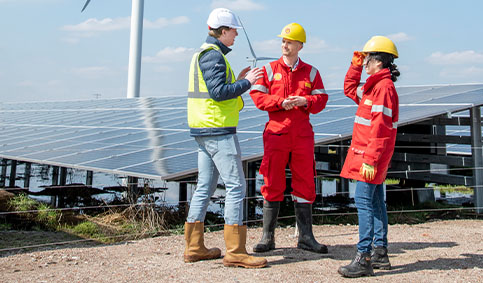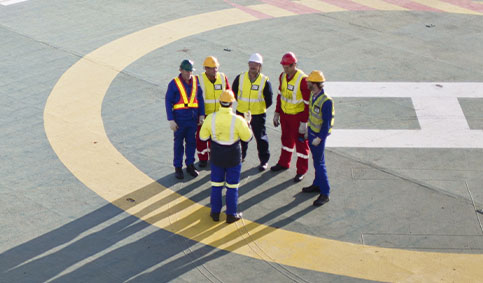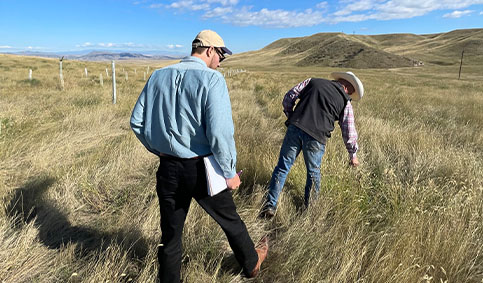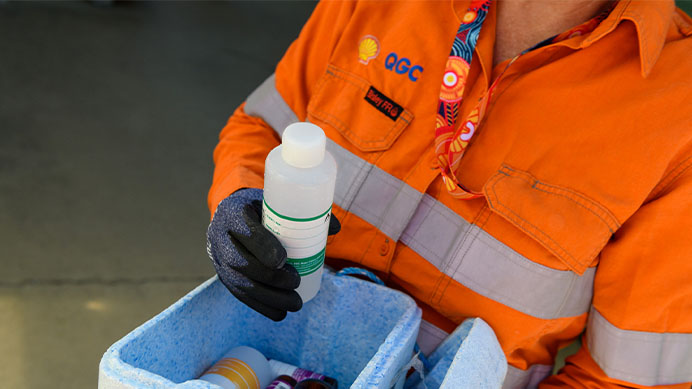Conserving water resources
Water
We are implementing water stewardship principles across our businesses and developing local improvement plans. This includes focusing on the sustainable management of fresh water, including in water-stressed areas.
In 2023, we continued to make progress in reducing our consumption of fresh water in highly water-stressed areas.
At the end of 2023, four of our major facilities were located in areas where there is a high level of water stress based on analysis using water stress tools such as the World Resources Institute’s Aqueduct Water Risk Atlas and local assessments. The facilities are:
- Pearl GTL (gas-to-liquids) plant in Qatar;
- Shell Energy and Chemicals Park Singapore;
- Shell Jurong Island chemical plant in Singapore; and
- Tabangao Import Terminal in the Philippines.
In 2023, these four facilities consumed 17 million cubic metres of fresh water, compared with 18 million cubic metres in 2022. With this reduction, we achieved our commitment to reduce fresh-water consumption by our facilities in areas of high water stress by 15% compared with our 2018 baseline of 25 million cubic metres. The reduction was mainly the result of decreased water use at the Shell Energy and Chemicals Park Singapore following the decommissioning of some processing units, with a smaller reduction at the Pearl GTL facility in Qatar.
Fresh water withdrawn and consumed [A]
Million cubic metres
In 2023, for all our sites, our overall intake of fresh water increased to 162 million cubic metres from 148 million cubic metres in 2022. The increase was due, in part, to the effects of a fire at the Shell Deer Park chemical plant and increased production at Shell Polymers Monaca in the USA.
Fresh water withdrawn by business
Million cubic metres
Fresh water withdrawn by source
Percentage
Of our fresh-water intake in 2023, 33% was from public utilities, such as municipal water supplies. The rest was taken from surface water, such as rivers and lakes (51%) and groundwater (around 16%). Around 94% of our fresh-water intake in 2023 was used for manufacturing oil products and chemicals, with the rest mainly used for oil and gas production.
In addition to our Powering Progress commitment to reduce water consumption in water-scarce areas, we also aimed to assess options for further reduction goals. In 2021 and 2022, we conducted detailed water use assessments at six major Shell facilities. The results of these assessments, along with discussions with stakeholders, have moved us towards a more sustainable and holistic stewardship approach. This goes beyond focusing on water use and includes aspects of governance and water quality, involvement of stakeholders and consideration of catchments. We are now implementing water stewardship principles across our businesses and developing local improvement plans.
By the end of 2023, we had completed detailed assessments against these principles at eight of our downstream and upstream facilities to identify opportunities for improvement. We plan to roll out the programme across other facilities and projects in 2024.
Waste water and produced water
We track low-level concentrations of oil, grease and other hydrocarbons in water returned to the environment from the day-to-day running of our facilities (referred to as “discharges to surface water”). We work to minimise these discharges according to local regulatory requirements and our own standards.
In 2023, the combined total of hydrocarbons discharged to surface water across all our facilities increased to 1.0 thousand tonnes, compared with 0.9 thousand tonnes in 2022, which was due, in part, to discharges at the Shell Energy and Chemicals Park Singapore.
We disposed of 58 million cubic metres of produced water in 2023, which is unchanged from 2022.
Find out more about water use at www.shell.com/sustainability/environment/water.









